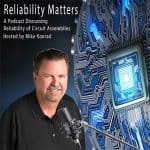
Exploring the Problem Space: A Key Principle for Robust Product Design and Project Success
Ever wonder why many product designs fail or why projects don’t always come out as planned? The answer might lie in how we approach the ‘problem space’ versus the ‘solution space’.
We’re celebrating two and a half years of Quality During Design podcast by revisiting the fundamental principles that guide our product design processes, and exploring how we can apply these principles to avoid common pitfalls.
We talk about the importance of staying longer in the problem space, using quality tools for teamwork, and understanding the power of pre-work in meetings. Listen-in to challenge our thinking and push us to rethink how we engage with new projects. Plus, gain insights on how questioning, investigating, and experimental approaches during project planning will empower you to refine your design processes.
We’re inviting you to consider how the Quality During Design methodology can streamline your design process, reduce product failures, and create more meaningful customer experiences. This isn’t just about designing products; it’s about redefining how we perceive and approach the entire design process.












